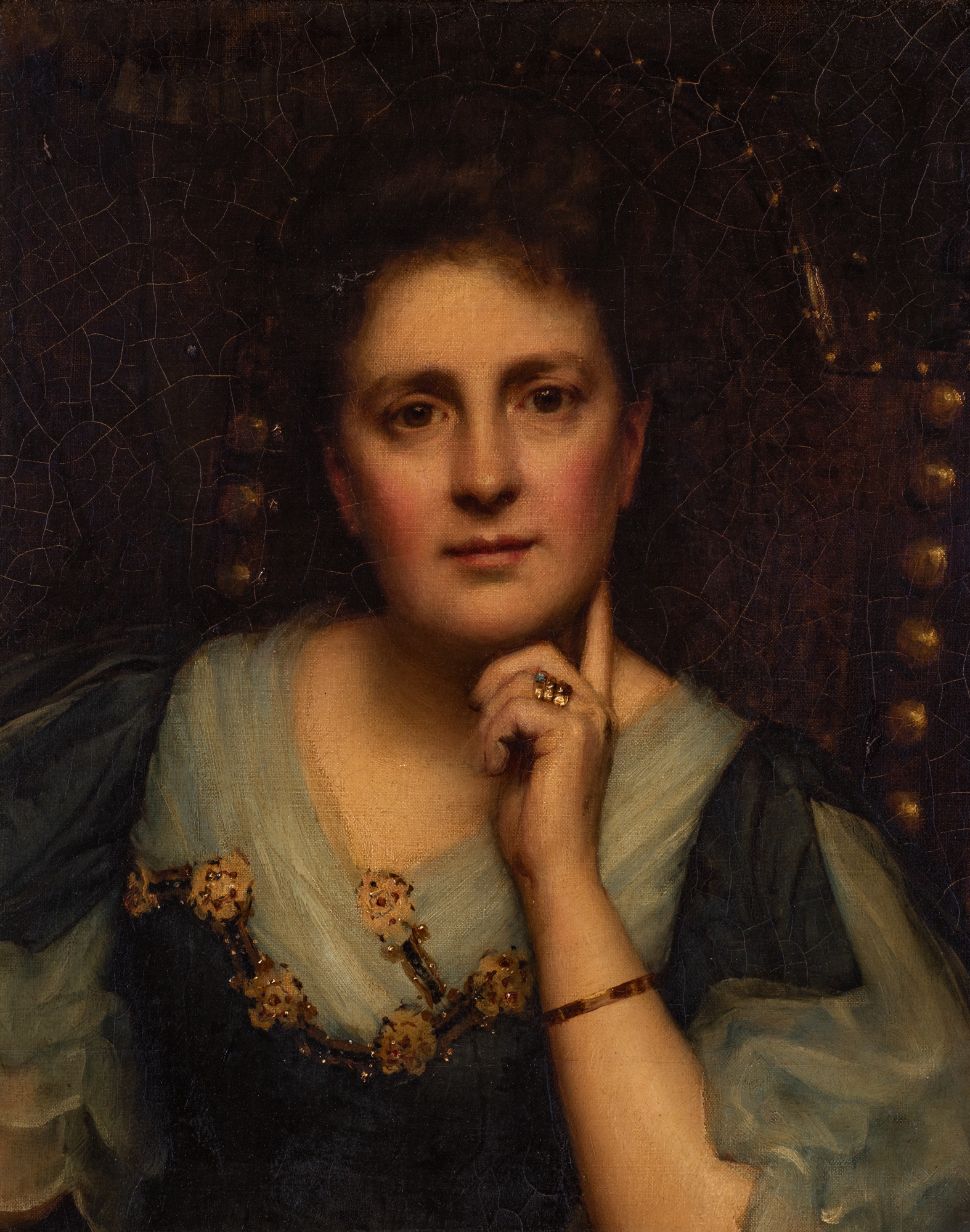Kaptein on Longstaff
Central Goldfields Art Gallery curator, and Castlemaine local, Helen Kaptein examines a portrait by John Longstaff of his wife Topsy.

Born to Draw - Sir John Lognstaff (1861-1941)
The first Australian artist to be knighted was John Longstaff, who was born in Clunes, Central Victoria, in 1861.
Longstaff had to overcome many barriers in his early years before he could pursue his life as an artist. He was the third of ten children, and had a difficult relationship with his father, Ralph, who operated a general furnishing and ironmongery warehouse in Clunes. When the family moved to Shepparton, John was put in charge of a branch of his father’s store in Bunbartha, 32 kilometres from Shepparton, and separated from the rest of his family.
Longstaff was born to draw. He won a school state-wide drawing prize at the age of nine, but while his mother supported his artistic talent, his father did not. Ralph Longstaff sent his son John to work as a law clerk in the importing firm of Sargood, Butler and Nichol in Melbourne. There his talent continued to shine. John’s employer Butler was so impressed by a portrait he painted that he convinced Ralph Longstaff to send his son to the National Gallery School in Russell Street, Melbourne.
This undated portrait is of John Longstaff’s wife, Rosa Crocker (known as Topsy), whom he married in 1887. Topsy’s face has a luminous quality and looks directly out at us from the dark background. Longstaff shows his mastery of painting fabrics in the shimmering appearance of the dress, painted with loose brush strokes, as well as the sparkle of the wedding ring. Reclusive by nature, Topsy is at ease being painted by her husband. Her eye must have met her husband’s as he painted her, and now her gaze meets ours as we study the portrait. This is one of a number of portraits that Longstaff painted of his wife. She is older here than in other, better known, portraits.
Longstaff met Rosa Crocker when they were both lodging in a house in East Melbourne. They married four years later, when Topsy was 21 and Longstaff 26, and later that year sailed away to London and then Paris, after Longstaff won the National Gallery School’s first travelling scholarship in 1887.
Longstaff is known as a portrait painter. He received many portrait commissions during his life living in Paris, London and Melbourne, painting well-known members of society. He was able to support his family throughout his life by choosing to paint portraits, even though he, his wife and some of his children lived in separate parts of the world for lengthy periods of time—Topsy and their youngest son and daughter lived in England at the end of their life, while Longstaff remained in Melbourne, where he died in 1941.
Longstaff’s position in Australian art history, according to Susan Gilberg, “has been overshadowed by the groundbreaking and iconic paintings of his contemporaries Tom Roberts, Arthur Streeton and Frederick McCubbin”. Perhaps this is because he has an academic style; he was committed to capturing both the likeness of his sitter and the essence of their character. He admired the work of Frans Hals (1582–1666) and, in particular, his painting of hands. This portrait demonstrates Longstaff’s virtuosity at this aspect of portrait painting.
Longstaff moved from a background of poverty and hardship to a life of financial stability. He was the official war artist with the Australian Infantry Force in the First World War, the first Australian artist to be knighted in 1928, and won the Archibald Prize five times. Central Goldfields Art Gallery is working on an exhibition of his work, currently planned for 2022.
Helen Kaptein
October 2020
Sources
Peter Timms, Sir John Longstaff (1862–1941): an exhibition prepared by Shepparton Art Gallery for Arts Victoria 75, Shepparton Art Gallery: May 1 – June 30, Shepparton Art Gallery, 1975.
Portrait of a Lady: Sir John Longstaff, curated by Susan Gilberg, 18 February – 22 April 2012, Shepparton Art Museum.